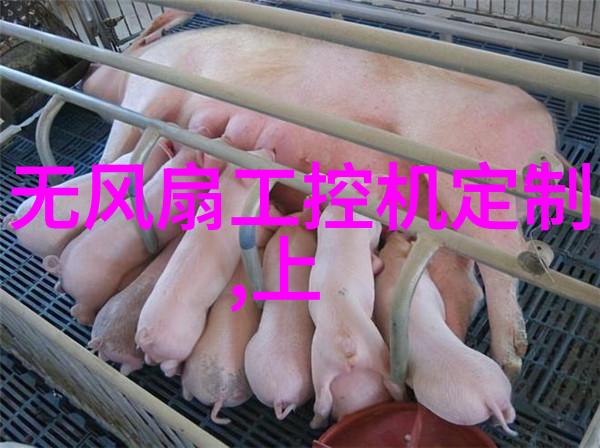您现在的位置是: 首页 - 工控机 - 湿度单位在农业中的应用与意义 工控机
湿度单位在农业中的应用与意义
2025-04-24 【工控机】 0人已围观
简介1.0 引言 农业作为人类社会的基础,生产力水平的提升直接关系到粮食安全和国家经济发展。随着科技的进步,农业生产手段不断完善,其中湿度控制技术尤为关键,它不仅影响作物生长环境,还能提高农产品质量。本文将探讨湿度单位在农业中的应用及其意义。 2.0 湿度单位定义与测量 湿度是指空气中水汽含量相对于干燥空气最大水汽容积百分比的一种物理量。它是衡量环境湿润程度的一个重要参数。在农业生产中
1.0 引言

农业作为人类社会的基础,生产力水平的提升直接关系到粮食安全和国家经济发展。随着科技的进步,农业生产手段不断完善,其中湿度控制技术尤为关键,它不仅影响作物生长环境,还能提高农产品质量。本文将探讨湿度单位在农业中的应用及其意义。
2.0 湿度单位定义与测量

湿度是指空气中水汽含量相对于干燥空气最大水汽容积百分比的一种物理量。它是衡量环境湿润程度的一个重要参数。在农业生产中,正确地使用和理解湿度计读数至关重要。常见的湿度计包括校准仪、电阻式传感器、热电偶等,这些设备能够提供精确的温度和相对湿度数据。
3.0 湿度对作物生长的影响

不同植物对土壤或空气中的水分需求有很大差异。过低或过高的相对湿度都会导致作物生长受到限制。在一定范围内(通常认为为50%~80%),较稳定的相对湿度可以促进植物正常生长。但如果超出这个范围,可能会导致病害发生,如霉菌感染、真菌性根腐病等。此外,不当的人工加温也可能导致室内环境失去其自然风化过程,从而使得作物无法适应所需光照强弱。
4.0 湿 度管理在不同农艺条件下的应用

在不同的农艺条件下,有效地控制并管理温度和光照间接通过调节空间内的大气流动来实现,也就是说通过控制通风系统以改变室内外温差,从而达到调整大气流速以维持最佳微环境给予植物最合适之空间。
5.5 在温带地区进行果蔬栽培时,对于保持果实品质以及减少疾病发生率,有必要监控周围环境,并根据需要调整房间内部相对折射率,以便更好地模拟天然成熟过程。

6.6 在暖带地区栽培某些热季节敏感类型如番茄叶子会因为高温引起脱落,所以必须设定冷却系统来降低温度,但同时也要注意避免让房间过于干燥,因为这会破坏植物表皮,并且影响营养吸收。
7.7 对于那些需要特定光线条件才能正常发育(例如向日葵)的植物来说,可以利用特殊设计的手臂或者移动平台,使得每一株植物都能得到足够阳光,而不会因为太多太少的情况造成伤害。
8.8 为了提高效率,同时降低能源消耗,在现代绿色建筑中采用了智能系统,它们能够自动监测并调整室内环境参数,比如通过自我学习算法计算出最佳工作模式,以最大限额利用可用资源并最小化无谓开销。
9.Agriculture in controlled environments: The role of relative humidity and its measurement.
10.The use of sensors and automation systems to monitor and control temperature, humidity, light intensity, CO2 levels, air circulation rates, and other environmental factors is becoming increasingly important for optimizing plant growth conditions while minimizing energy consumption.
11.Case studies from various countries demonstrate the benefits of using these technologies to increase crop yields while reducing water usage.
12.The application of data analytics tools can help farmers make more informed decisions about their crops based on real-time data collected from sensors in the field or in greenhouses.
13.In addition to improving crop yields, controlling humidity can also reduce the risk of pests and diseases by creating an environment that is less conducive to their growth.
14.Further research into how plants respond to different levels of humidity could lead to new strategies for managing agricultural production under changing climate conditions.
15.Conclusion
The importance of measuring relative humidity cannot be overstated when it comes to agriculture as it plays a critical role in determining optimal growing conditions for various types of crops within different ecosystems such as soil-based farming or indoor cultivation facilities like greenhouses or hydroponic labs where controlled environments are used primarily due mainly because they offer greater control over variables than traditional outdoor settings do; henceforth this technology has become essential toolset for modern-day farmers seeking higher productivity with reduced costs associated therewith (water conservation).
16.References






